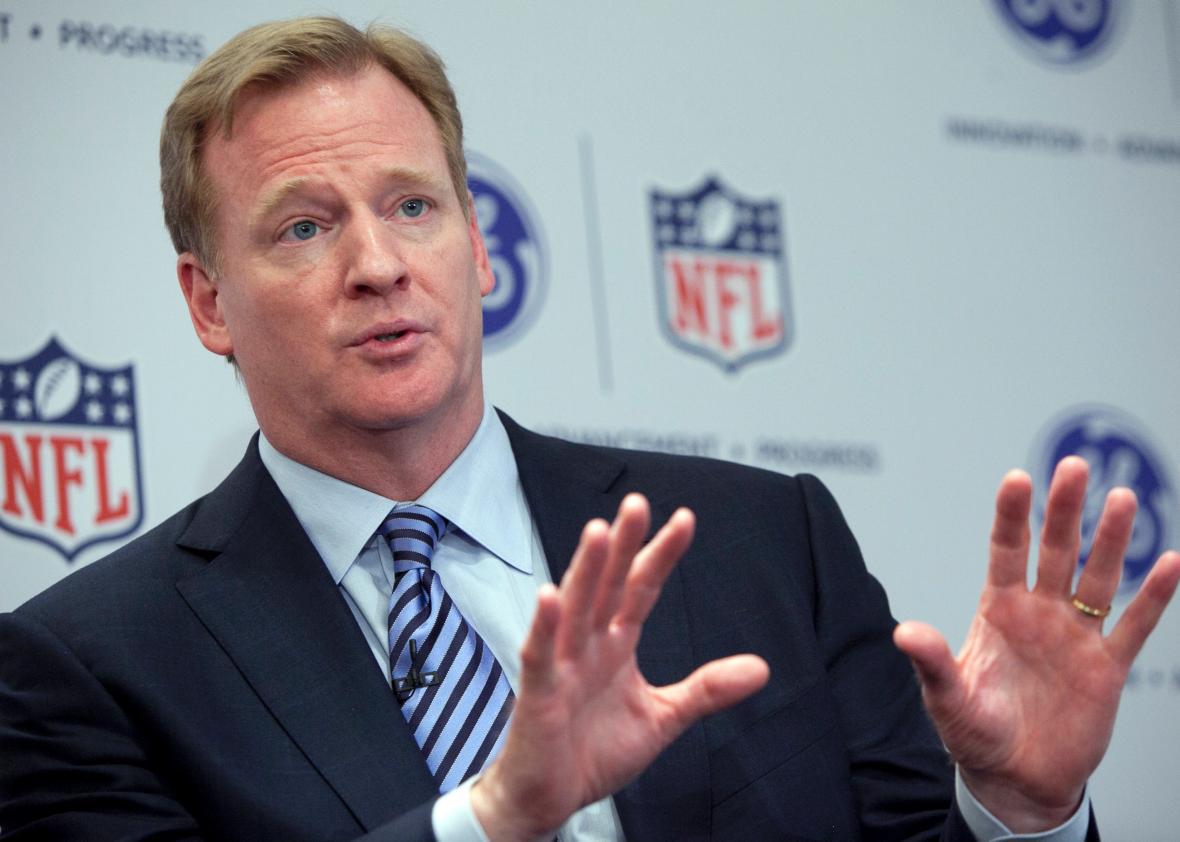The NFL and USA Football, the governing body for youth football in America, are desperate to convince the world that the sport is safe and wholesome and not a pathway to debilitating brain injuries. To that end, the league and the nonprofit have touted an educational program called Heads Up Football that promises “to advance player safety.” As Alan Schwarz explains in the New York Times, Heads Up Football has been touted “to thousands of leagues and parents as having been proved effective,” with the NFL and USA Football claiming “that an independent study showed that the program reduced injuries by 76 percent and concussions by about 30 percent.”
It turns out the study, which was published in July 2015, didn’t show anything of the sort. “Heads Up Football showed no demonstrable effect on concussions,” Schwarz writes, “and significantly less effect on injuries over all, than USA Football and the league have claimed in settings ranging from online materials to Congressional testimony.”
The NFL and USA Football—which is closely tied to the NFL, financially and ideologically—told the Times they didn’t know they’d been using faulty data to convince parents to let their children bash their tiny, helmeted heads into other kids. Both organizations blamed the contracted research company, the Datalys Center for Sports Injury Research and Prevention, for providing them with preliminary data that indicated the Heads Up Football program did reduce instances of injury and concussions. Datalys, which received a $70,000 grant from USA Football to conduct the study, took all the blame when questioned by the Times.
The lead researchers for Datalys, Thomas Dompier and Zachary Kerr, confirmed in interviews that, despite knowing that the final paper contradicted their preliminary claims, they did not inform USA Football of this until last month, one day after speaking with the Times.
Mr. Dompier, the president of Datalys, said in an interview: “We’re the ones that put out the numbers. We’re the ones that kind of blew it.”
In an email, Mr. Kerr said that the company had released the early data because, “The results were so compelling, we felt morally obligated to make the youth football community aware of the results.”
Blaming this all on a couple of bumbling researchers isn’t going to fly. After receiving the preliminary findings in February 2015, USA Football announced the results on its website, making no mention that they were not final. USA Football’s blog post, which as of this moment remains online in its original, uncorrected state, claimed a study of more than 6,000 players had found that “compared to non-Heads Up Football leagues, leagues that adopted Heads Up Football had a 76 percent reduction in injuries” and “29 percent reduction of concussions in games.”
In reality, the final study concluded there was no change in injury levels in Heads Up leagues, though leagues that had adopted Pop Warner’s 2012 safety rules changes, which include limiting head-to-head tackling and blocking, did see a reduction in concussions. As Slate’s Science columnist Daniel Engber pointed out on Twitter, the NFL and USA Football strangely didn’t seem interested in touting the latter result.
What accounted for the drastic change between the widely covered preliminary findings and the final study, which was all but swept under the rug? Datalys won’t say. The Times writes:
The authors did not address how the paper’s data contradicted their preliminary conclusions from five months before. Regarding the fact that Datalys did not inform USA Football or the NFL of the discrepancies, Mr. Kerr said in an email: “Datalys stands by our decision to release preliminary data in our Feb 2015 release because if we prevented even one youth football player from suffering an injury (sprain, fracture, strain, severe contusion, or concussion), then the release was a success.”
The NFL and USA Football told the Times they would remove the online materials related to the study’s preliminary findings and add updated information. (As of now, the online pamphlet touting the figures from the preliminary findings is still on USA Football’s website. Similarly, a story extolling the study remains on NFL.com with no update.) But in a brief statement on its site, USA Football says it “stands behind the independent peer-reviewed results of Heads Up Football’s efficacy published in medical journals as well as other third-party case studies regarding the effectiveness of the program” and that it is “reviewing the New York Times article and will release a statement today.”
